Who was Sigmund Freud? Detailed information on Sigmund Freud life story, biography, discoveries, works and theories.
Sigmund Freud; (1856-1939), Austrian physician and neurologist, who founded psychoanalysis, a new school of psychology embodying revolutionary and controversial views of human behavior. He also established a new system for treating behavior disorders.
Freud was born at Freiberg, Moravia, on May 6, 1856, to middle-class Jewish parents. He was given the name Sigismund, with the Jewish addition of Solomon, but at the age of 17 he changed his first name to Sigmund.
When Freud was three years old, his family moved to Vienna. His father, Jacob Freud, had two sons by a first marriage. Some 20 years older than Sigmund, they emigrated to Manchester, England, instead of Vienna. Sigmund was the eldest child of the second marriage; he was followed by two brothers and five sisters. His early years were passed in extreme poverty.
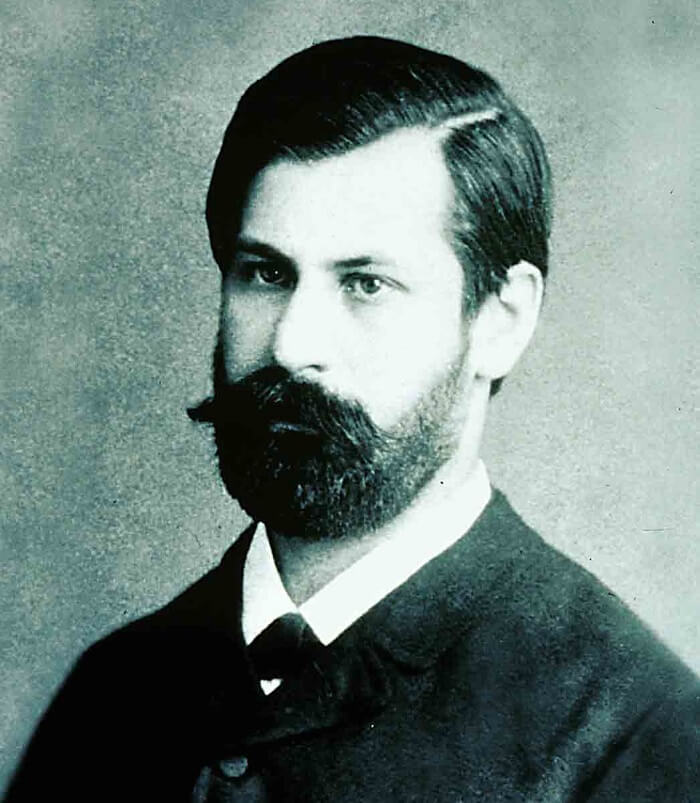
The Years of Preparation.
As a youth Freud was interested in general philosophic and humanitarian problems, but he felt the need to curb his exuberant imagination by a strict scientific discipline. He therefore entered the medical faculty of the University of Vienna in 1873, where he was financially supported by a Jewish philanthropic society.
The chief of the physiological laboratory where Freud carried out most of his research work was Ernst Wilhelm von Brucke, a stern disciplinarian and a man of impeccable scientific integrity; his personality left an indelible impression on the young student. The first paper Freud published described a brilliant piece of research in which he demonstrated that the spinal ganglion cells of lower animals are identical with those of higher animals, a view previously disputed.
This proof was a useful contribution to the theory of evolution. Shortly afterward he described the strueture of nerve cells and thus laid the foundation of the neuron theory, the basis of modern neurology. Absorbed in these important researches, Freud postponed acquiring a medical qualification for two years, and even after doing so confined his work to the laboratory. He had no aptitude for mathematical or physical science, and his work was always in histology, the study of the strueture of tissues.
Freud proceeded next to the microscopic unraveling of various tracts in the human nervous system. His chief work here was done on the medulla oblongata, the lowest part of the brain. He clarifîed the connections between the spinal cord and the cerebellum. Most valuable, however, were his thorough investigations of the roots of the acourtic nerve and his demonstration, again important to the theory of evolution, that the sensorv nuclei of the cranial nerves and the sensory ganglia of the spinal cord have corresponding struetures. These researches were published in 1885-1886.
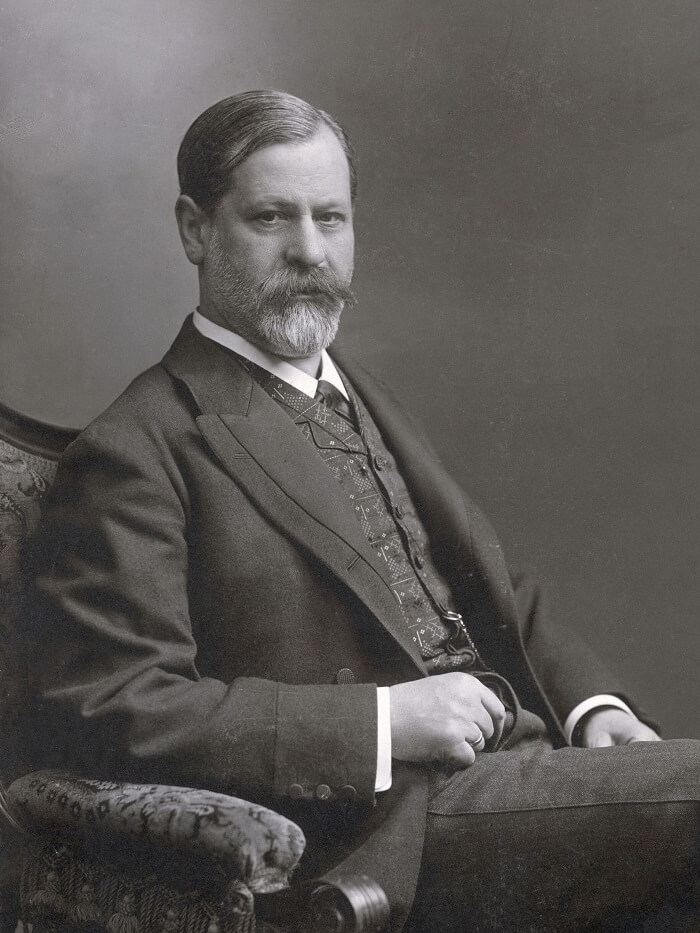
In 1882, Freud fell in love with a friend of his sisters five years younger than himself. Martha Bernays, though then resident in Vienna, came of a distinguished Jewish family in Hamburg. Freud at once perceived the necessity of adopting a more practical career than that of pure research, so he entered the Vienna General Hospital as a resident assistant physician.
In the three years he worked there in the various departments, he acquired a full training in all branches of medicine, but his interest concentrated on psychiatry under his teacher Theodor H. Meynert. During his hospital period Freud published some comprehensive studies on cocaine, which brought the drug to the notice of the medical profession. He discovered its anesthetic properties and suggested to some ophthalmological friends that it might be of use when applied to the eye. One of them, Cari Koller, published the finding and was hailed as the originator of local (cocaine) anesthesia.
At the end of his period in the hospital, Freud was granted a small stipend that enabled him to travel to Paris (1885) and study under the famous neurologist Jean Martin Charcot at the Salpetriere. The four and a half months in Paris proved a decisive turning point in his career. To witness the most celebrated neurologist of his time devoting himself to the study of hysteria encouraged Freud to do the same. This was an important influence in deflecting his interest from the physical aspects of neurology to the psychological, from the brain to the mind. On his return to Vienna he reported to the medical society what he had seen in Paris, but he was received in a cold silence—a forerunner of responses to his later work.
Freud started a private practice as a neurologist in the spring of 1886 and married Martha the following September. The marriage was one of unalloyed happiness. He had six children— three sons and three daughters—of whom the youngest, Anna Freud, became a distinguished psychoanalyst. He was attached for some years as a neurologist to a children’s clinic, and he published two large volumes, which rank as standard works, on the various paralyses of children. He thus became one of the leading neurologists in Europe, and there is no doubt that his many years of work in this field had a considerable influence in the formulation of his later psychological theories.
The Beginnings of Psychoanalysis.
In 1882, Josef Breuer, an older colleague and friend, had told Freud of a patient, Anna O., wno had benefited from the “cathartic” method of reviving painful memories while in a state of hypnosis. Freud had related the case to Charcot, without, however, being able to arouse his interest. In his practice he used hypnotism with hysterical patients, but being dissatisfied with the results, he went to Nancy in 1889 to consult Hippolyte Bernheim, a well-known expert. This was about the time when he was having recourse to Breuer’s cathartic method.
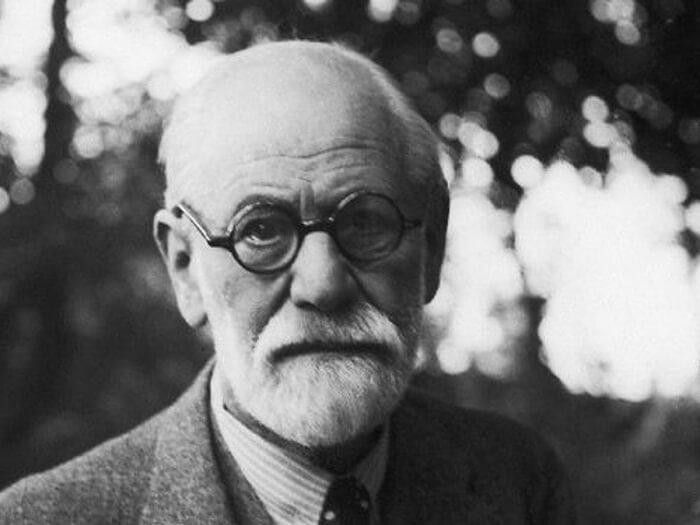
Three years later he observed that among the painful forgotten memories those of unacceptable wishes were predominant, and this led to his conception of repression, one of the cardinal elements of his theory. He then got Breuer to cooperate with him, and together they published in 1895 the epochmaking book Studies in Hysteria. By this time, however, Freud had abandoned the use of hypnotism for the method of “free association”; devising this was one of the two great deeds of Freud’s life, the other being his self-analysis, which followed two years later.
In these years he read several papers before medical societies in which he announced the startling conclusion that various psychoneuroses were caused by unconscious sexual conflicts. He was coldly received and almost ostracized as a crank. For years he had only one sympathetic friend, Wilhelm Fliess in Berlin. Freud’.s letters and memoranda to him (published in Origins of Psychoanalysis, 1954) give a vivid picture of
his struggles in those years, and of the tentative steps in his endeavor to obtain a clear vision of the deeper layers of the mind. Of particular interest is a lengthy memorandum called “The Project,” in which he tried to describe various mental processes, those of thought, memory, and so on, in terms of neurons. It was his last attempt to correlate the mental processes with physical ones.
The Great Discoveries.
Freud’s most fertile years were those between 1895 and 1900. In the latter year he published what is considered to be his magnum opus, The Interpretation of Dreams. This deals not only with the puzzling problems of dream life, which had baffled all previous investigators, and the complex mechanisms at work in the manufacture of dreams, but also with the structure and mode of functioning of the deeper layers of the mind, the unconscious. Freud’s most important contribution to knowledge was his detailed study of what he called the “primary” and “secondary” systems of the mind. He showed how fundamentally different was the mode of functioning in these, and how complicated and fateful are the relations and interactions between the two.
The mental mechanisms of the primary system he described, of which he had first acquired a knowledge in his investigation of the psychoneuroses, are an integral part of psychoanalytical theory. The most important are those called repression, condensation, displacement, inversion, and secondary elaboration. It is these mechanisms that enable unacceptable wishes, drives, or impulses to find indirect gratification. The theory of disguised wish fulfillments was one of Freud’s most valuable contributions to psychology: through it he replaced the older association psychology by a truly dynamic conception of the mind.
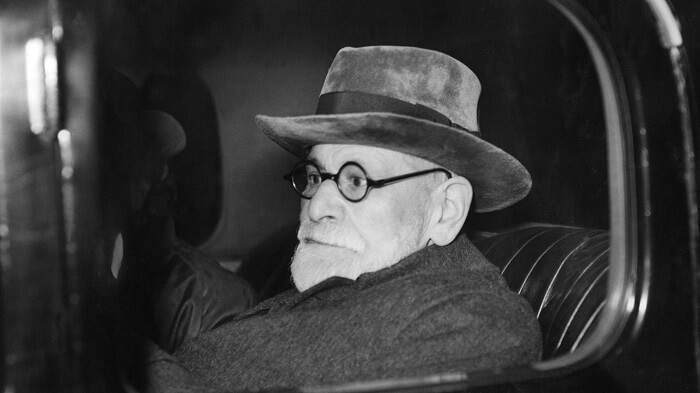
Freud found that the content of the unconscious differs as much from consciousness as do its characteristic mechanisms. It is essentially of infantile origin, and here Freud threw a light on the inner nature of the young child’s mind that startled and repelled the world. He maintained that hidden layers in the child’s mind are animated by sexual and hostile motives concerning its parents. A typical example is the Oedipus complex, consisting of sexual desire toward the parent of the opposite sex and jealous hatred of the rival. Freud even held that the child has erotic sensations from the beginning of life, at the breast itself. The book on dreams was largely ignored on its appearance, but when the sexual doctrines just mentioned were described more fully a few years later, a storm of abuse broke out.
Freud the Man in His Maturity.
Some account may be given here of Freud’s personality and interests at the turn of the century. He was a highly cultivated man, a classical scholar and well read in the great literature of his own country and of several other countries. He had a profound knowledge of Greek mythology, allusions to which were constantly on his lips and widely interspersed throughout his writings. His literary ability was such as to make him recognized as a master of German prose. In the arts he had the greatest appreciation for poetry and sculpture, some for painting and architecture, but relatively little for music.
In the years between 1890 and 1914 he spent, as a rule, some three or four weeks in Italy studying masterpieces. On such travels he would be accompanied by his brother or a friend; his wife, who was a bad traveler, usually preferred to remain with the children. Before each journey some six weeks’ holiday was spent with the family in a quiet mountain resort, times of great happiness and delight. Freud was unusually fond of children and loved their company.
A prominent feature of Freud’s personality was a highly developed sense of humor, always penetrating and sometimes sardonic. He was thus often able to make amusing comments on abusive criticism which others might only have resented. He possessed a rich fund of Jewish jokes and anecdotes with which to point an argument.
In 1891 the family moved to 19 Berggasse, in Vienna, where they lived until 1938′. In 1908 Freud acquired a second apartment of three rooms on the same floor, which was made to communicate with the domestic one. His rooms were full —one might almost say cluttered—with his collection of antiquities, particularly from Greece and Egypt; this was his sole hobby and it gave him immense pleasure. He followed archaeological excavations with a lively interest.
Development of the Psychoanalytic Movement.
In 1902, Freud invited a few young colleagues and students to meet regularly to study the investigations he was carrying out. The little body, modestly called the Wednesday Psychological Group, later became the Vienna Psycho-Analytical Society. Among them the two now remembered are Alfred Adler and Wilhelm Stekel.
For five years after The Interpretation of Dreams Freud wrote little, but in 1904 there appeared what is probably his most popular book, The Psychopathology of Everyday Life. It is a study of the many kinds of imperfect mental functioning, such as forgetting, slips of the tonguf and pen, mislaying of objects, and so on. The conclusions Freud expressed are now very widely accepted, more so than any other of his theories. The book is a serious contribution to the theory of determinism, since it showed that many apparently accidental and meaningless acts, and many ascribed simply to “free will,” are motivated by hidden and conflicting wishes unrecognized by the subject.
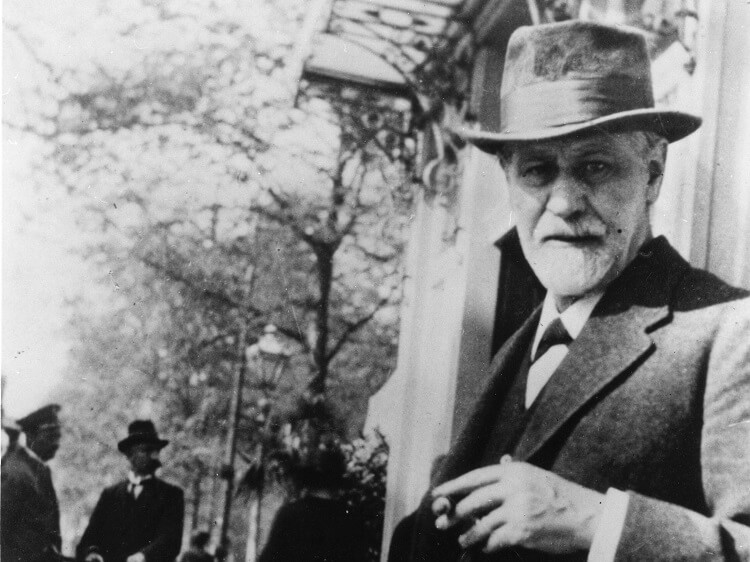
In the following year (1905) three important works appeared. One was a long essay, generally called the Dora Analysis, in which Freud expounded in detail how dream interpretation could be used in the unraveling and treatment of psychoneurotic symptoms; it is an important source of our knowledge of Freud’s technicjue. Another was a book entitled Jokes and Their Relation to the Unconscious, a penetrating study of the numerous ways in which unconscious motives can come to indirect expression.
In the same year he published his most disputed work, Three Essays on the Theory of Sexuality. The novel and, at that time, sensational part was his full description of infantile sexuality, together with the explanation of adult sexual perversions as a distorted derivative of it. This was the first book not to be ignored. On the contrary, it evoked great indignation, condemnation, and derision.
He became at once the most unpopular man in German scientific circles, and for many years he had to brave a tempest of vituperation and contumely such as has fallen to the lot of only the greatest pioneers. Freud never replied to any of these criticisms, however severe. The only work he ever published in defense of his doctrines was The History of the Psychoanalytic Movement (1914), in which he was concerned to define the essential difference between his beliefs and the opposing ones put forward by Adler and Cari Jung. For the rest his response was, like that of Charles Darwin, simply to continue publishing fresh evidence.
In 1906 two prominent Swiss analysts, Eugen Bleuler and Cari Jung, with their pupils, announced their adherence to Freud’s methods and conclusions. They were the first non-Viennese workers to do so, with the exception of an English physician, Ernest Jones. In April 1908, Jung organized the first International Psycho-Analytical Congress, held at Salzburg. Two years later the International Psycho-Analytical Association was formed, a body that 50 years later had more than 30 constituent societies in most countries of the world.
At the first congress there were 42 members, including Kari Abraham, Bleuler, Sândor Ferenczi, a Hungarian colleague of Freud, Jung, and Ernest Jones. In September 1909, Freud made his only visit to America when he and Jung gave a course of lectures, on President G. Stanley Hall’s invitation, at Clark University, Worcester, Mass. This recognition was particularly welcome to Freud because he had faced much hostility to his theories. At this time he formed a close friendship with the Boston neurologist James J. Putnam. Adler in 1911 and Stekel in 1912 and Jung in 1914 dissociated themselves from Freud because of both personal and scientific differences.
In 1912, Ernest Jones formed a private group called the Committee, including Abraham, Ferenczi, Otto Rank, a Viennese analyst, and himself. Its function was to advise and help Freud in his administrative problems and to act as a barrier between him and the hostile world of abuse.
In 1885, Freud had been made a doçent of the University of Vienna, which entitled him to deliver unofficial lectures there. In 1902 he was made a professor extraordinary, and in 1920 a full professor—without, however, any seat on the faculty or any additional privileges. He therefore never held any official teaching post there.
Nonmedical Applications of Psychoanalysis.
Freud published an immense number of clinical papers dealing with the detailed problems of psycho-analytic investigation, and also five lengthy case histories which provide much information on his method of working. In addition, he wrote a series of special papers on the technique of psychoanalysis. But from the beginning, as was evident in his lnterpretation of Dreams, he was alive to the broader implication of his discoveries and saw that they must throw light on human problems far transcending the narrow field of the psychoneuroses. The knowledge gained in this more accessible field could be applied to the obscure problems of “normal” life. For this purpose he founded, in 1912, a special periodical, Imago, devoted to these nonmedical applications of his work. It supplemented the earlier Jahrbuch der Psychoanalyse (1909) and Zentralblatt für Psychoanalyse (1910), which was soon replaced by the Zeitschrift für Psychoanalyse (1913).
Freud had long been struck with admiration at the penetration into psychology shown by the great creative writers, and in 1907 he wrote Delusions and Dreams in Jensen’s “Gradiva,” a charming study of a novel by the German writer Wilhelm Jensen. In the creation of this imaginative writer he recognized the same psychological mechanisms as those he had elucidated in his investigations of dreams and neuroses. He followed this three years later with a more ambitious study entitled Leonardo da Vinci and a Memory of His Childhood. Here he traced Leonardo’s conflicts between his artistic and scientific strivings to experiences in his early childhood. Under Freud s inspiration some of his pupils, notably Otto Rank, applied his methods to the unraveling of myths and folklore beliefs, and it became increasingly plain that there was much in common between all the various manifestations of the human imagination. Kari Abraham was even able in this way to throw light on the motives that had actuated the Egyptian pharaoh Ikhnaton (Akhenaton), the first monotheist, in his religious revolution over 3,000 years ago.
In 1913, Freud published Totem and Taboo, a book second in importance only to The lnterpretation of Dreams. It was a study of many features, such as the horror of incest and the ambivalence of feelings, that he found to be common to the primitive mind of both children and savages. He laid stress on the significance of parricidal deeds in primitive man and traced to the remorse and other responses to parent murder the dawn of civilization, morality, and religion.
World War I brought hardship to Freud and his friends, with its minimum of food, absence of heating, and other discomforts. Then the destruction of the Austrian currency after the war meant not only the loss of all his savings, but a hard fight to avoid bankruptcy. During the war he published his only work on current events, Thoughts for the Times on War and Death (1915). He pointed out that the disillusionments of the war were not really necessary, since they proceeded from the previous illusion that mankind had made furtner moral progress than it actually has; this was merely revealed by the terrible events of the war. Eighteen years later he was invited by the League of Nations to conduct a correspondence with Albert Einstein on the topic “Why War?” While retaining some hope for the future, Freud noted the obstacles in the way of abolishing war.
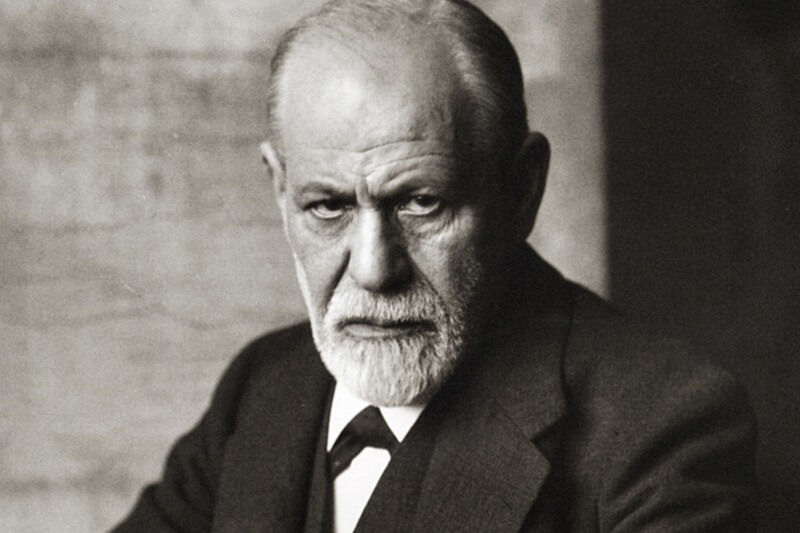
The Culminating Years.
In the first year of the war, probably under the impression that his work was coming to an end, he published a series of fundamental essays on the nature of the mind. They were a culmination of his main life’s work.
In 1919, Freud founded an international publishing firm confined to psychoanalytical periodicals and books. It published five of the former and 150 of the latter before the Nazis confiscated it in 1938.
In the same year Freud startled his followers by propounding, in a book called Beyond the Pleasure Principle, a revolutionary new theory of the mind. Hitlıerto he had held that the ruling principle in the mind was the pleasure-pain principle, with its derivative the reality principle. Now he postulated a more fundamental one, which he called the repetition-compulsion principle, with its tendency to restore earlier states of being.
This, when carried to its logical extreme, implied that there was a tendency working to reduce life to inanimate matter, and Freud termed this a “death instinct.” It is a philosophical rather than clinical conclusion, and few of his followers have felt able to accept it. It also indicated a change in Freud’s theory of the instincts. He had made several attempts to group them, always into two opposed sets, and in this work he reduced them to the fundamental categories of life and death instincts. The latter, he believed, become exteriorized, thus giving rise to the aggressive impulses that so torment mankind.
In the next couple of years two books followed, Group Psychology and the Analysis of the Ego, and The Ego and the id, which laid the foundation of a new psychology of the ego, which is still being actively pursued with fruitful results. Freud had divided mental processes into those that are conscious, preconscious, and unconscious, but his further researches had led him to think that there were more fundamental criteria than the simple distribution of consciousness, useful as that had been.
He now proposed a new tripartite division into what he termed the id, ego, and superego. The first of these represents the primordial reservoir of energy derived from the primary instincts. He regarded it as entirely undifferentiated energy, but it may prove to be less so than he thought. The ego is a specialized agency derived from the id through contact with the outer world. He gave good reasons, from studying certain forms of resistance in patients, for supposing that an important part of the ego is itself unconscious, a conclusion that, incidentally, explains the strong conviction of spontaneity (free will) felt about decisions arising from those depths.
Some years earlier he had formulated the concept of an “ego ideal,” a narcissistic agency that criticizes the deficiencies of the actual self and spurs it to attain stricter moral or aesthetic standards. He now rechristened it with the name of superego, but with much wider connotations. It is a split-off part of the ego, and it incorporates the parental demands and standards that have been interjected and to some extent assimilated.
It has, however, deeper roots m the aggressive impulses and so is able to evoke extremely painful feelings of guilt. These may be so unbearable that the subject seeks for means of escape—a theme connected with criminal tendencies—or else tries to assuage them by various forms of self-punishment or feelings of inferiority. What is called “conscience” is a measure of the tension between the ego and the superego.
About this time, in the spring of 1923, Freud was stricken by a cancer in the upper part of the mouth. He underwent a radical operation the following October when all his upper jaw on one side had to be removed, necessitating the wearing afterward of a huge and complicated denture with its constant irritation. In the 16 years of misery that remained there were 33 operations, besides countless other manipulations and painful treatments. During that long period of suffering Freud is not recorded as ever having uttered a word of complaint.
In 1925, Freud published Inhibitions, Symptoms and Anriety, in which he threw light on the nature and origin of anxiety and fear; in the same year he wrote, in response to an invitation, a short Autobiography. The following year he wrote a book in defense of the practice of analysis by laymen rather than by men with medical as well as psychoanalytical training. He feared that psychoanalysis might become a trivial adjunct of medicine, and that its wider implications for humanity woud be neglected. His wish, however, that the practice of psychoanalysis become an independent profession has not been fulfilled.
In 1927, Freud wrote The Future of an Illusion, a book that brought on him much odium in religious circles. It was not, strictly speaking, a contribution to psychoanalysis itself but an expression of his conviction that psychological motivation alone, of wishes and fears, was adequate to account for the existence of religious beliefs, particularly those in God and immortality, without there being any need to invoke the existence of supernatural powers.
Another unpopular book came two years later, Civilization and its Discontents. It revealed the essential weaknesses in human society, and indicated much that needs to be remedied. Freud in his earlier book Group Psychology had thrown much light on the nature of the bonds uniting communities and also their origin—important contributions to sociology. In these years, he published as well a number of important clinical papers and a book, New Introductory Lectures on Psycho-Analysis, that brought up to date the two volumes of lectures he had published in the middle of the war.
In 1930, Freud’s literary abilities brought him the Goethe Prize, an honor he highly appreciated. The following year his native birthplace celebrated his 75th birthday by naming after him the street in which he was born. He was made an honorary member of a number of scientific societies, but no university conferred any honorary degree on him except Clark University on the occasion of his lectures there in 1909. His 80th birthday, however, in 1936, was widely celebrated, and to his gratification he was made a corresponding member of the Royal Society.
Freud in Exile.
The Nazi persecutions of Jews, which began in Germany in 1933, had a deep impact on Freud’s work. Most of his supporters in Germany had to flee the country, his writings were burned in a public bonfire in Berlin, and soon thereafter the main stock of books belonging to his publishing firm was confiscated in Leipzig. The firm struggled on, however, in spite of being deprived of its main sales, in Germany, until the Nazis invaded Austria in 1938 and confiscated its premises.
This persecution turned Freud’s thoughts to the problem of the nature and origin of Judaism, a theme that engrossed him for most of the last five years of his life. He kept writing and rewriting a book, Moses and Monotheism, which there was no opportunity of publishing under the authoritarian Catholic regime then ruling in Vienna. It appeared in 1938 after he had left that city, the English translation being published in the last months of his life.
It was a remarkably imaginative work, containing theses that are hard to prove or to disprove. In it he derived the characteristic monotheistic belief of Judaism from the stimulus given to that tenet by the revolutionary Egyptian pharaoh Ikhnaton, the first person to promulgate it. From a psychoanalysis of the curious birth story, Freud deduced that Moses was himself an Egyptian, and he suggested that he was a nobleman who adhered to Ikhnaton’s belief which, after the latter’s death, had been decisively rejected by the Egyptians. This for the first time made Freud unpopular in Jewish circles where he had previously been revered as a great Jew.
His view was that Moses implanted his monotheistic belief among the Jews, where he had to encounter great opposition, and that he was slain in one of the uprisings against his authority. Then Freud postulated subsenuent remorse at this treatment of the great leader, a remorse linked with the inborn reaction to parricidal wishes that Freud held to be an important part of man’s inheritance. The teaching of Moses was cherished by a few faithful followers until the great prophets established it centuries later.
In spite of much pressure Freud had resolutely refused to contemplate leaving what had become his native city. But when the Nazis invaded Austria in March 1938, it was evident that before long he would share the fate of other Jews. Ernest Jones flew to Vienna and persuaded him to emigrate to England, where the home secretary provided the fullest assistance for him, his family, and his students. He arrived in London in June, after overcoming the great difficulties placed in his way by the Nazis, and in September moved to his last home in Maresfield Gardens.
In September he underwent his last operation for cancer; it was an exceptionally severe one, and when the cancer came back in the following February it was deemed inoperable. Freud continued, however, with his professional practice, his reception of visitors, and his writing until a month before his death. He died in London on Sept. 23, 1939.